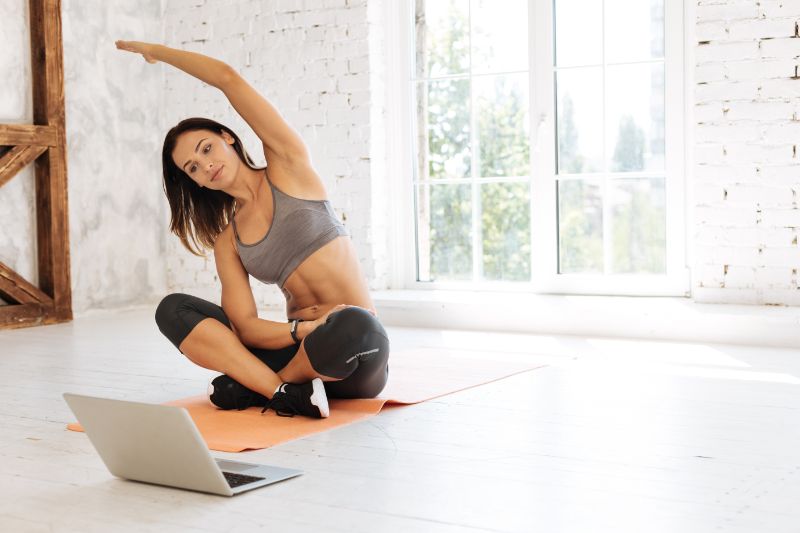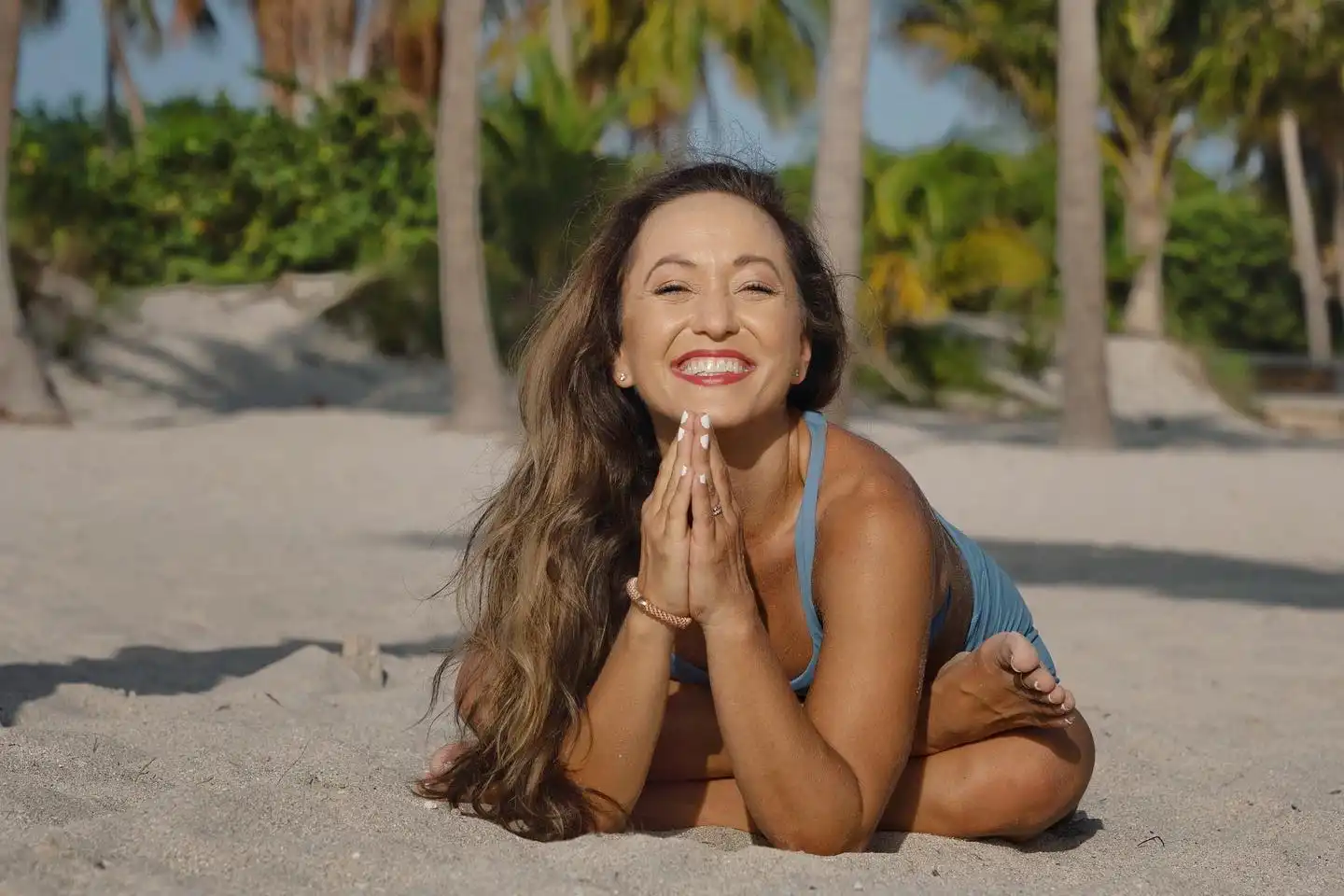
oga is considered a movement meditation because it involves both physical movement and mental focus. The practice of yoga requires a level of concentration and mindfulness that can help practitioners become more aware of their bodies and the present moment. As the body moves through various yoga poses, or asanas, the mind is trained to remain focused on the breath, the sensations in the body, and the movements themselves.
This can help to quiet the mind, reduce stress and anxiety, and promote a sense of inner calm and well-being. Unlike traditional seated meditation, which can be challenging for some people, yoga offers a more accessible form of meditation that combines movement and mindfulness, making it a popular form of mind-body practice for many individuals.
What are some other examples of Movement Meditations?
There are many other forms of movement meditations that one can practice. Here are a few examples:
- Tai Chi: An ancient Chinese martial art that involves a series of slow, flowing movements that can help reduce stress and improve balance and flexibility.
- Qigong: A system of physical and mental practices from China that uses slow, gentle movements, breathing techniques, and meditation to promote healing and relaxation.
- Walking Meditation: This is a simple practice that involves walking slowly and mindfully, paying close attention to the physical sensations of each step, as well as your thoughts, feelings, and surroundings.
- Dancing Meditation: This involves using movement and music to cultivate a meditative state. It can involve a wide range of styles, from freeform dancing to more structured forms like Sufi whirling.
- Yoga Dance: This is a fusion of yoga and dance that combines the physical postures of yoga with expressive, flowing movements set to music. It can be a fun and uplifting way to explore movement and connect with your body.
- Authentic Movement: This is a form of movement therapy that involves exploring spontaneous, unstructured movement in a safe, supportive environment. It can be a powerful way to tap into your inner wisdom and express emotions and experiences that may be difficult to put into words.
How does Yoga as a meditation work exactly?
Yoga as a meditation involves a combination of physical postures, breathing techniques, and mindfulness. The physical postures, also known as asanas, are designed to improve flexibility, strength, and balance while also releasing physical tension and promoting relaxation. The breathing techniques, or pranayama, involve various exercises that help to focus the mind and bring awareness to the breath. The practice of mindfulness involves cultivating present-moment awareness and non-judgmental acceptance of one’s experience.
By combining physical movement with breath and mindfulness, yoga as a meditation helps to quiet the mind, release stress and tension from the body, and promote a sense of inner peace and well-being. The physical postures serve as a means of channeling the energy in the body, while the breathing techniques help to calm the mind and balance the nervous system. The practice of mindfulness helps to cultivate a state of non-reactive awareness, which allows one to observe thoughts and emotions without being caught up in them.
Yoga as a meditation can be practiced in many different forms, from gentle restorative yoga to more vigorous vinyasa or power yoga. The key is to approach the practice with a sense of curiosity, openness, and non-judgment, and to focus on the experience of the present moment, rather than getting caught up in expectations or concerns about the past or future. Over time, with consistent practice, yoga as a meditation can lead to a greater sense of inner calm, clarity, and connection to oneself and the world around us.
Are there some Yoga practices that aren’t meditation-like?
Yes, there are many yoga practices that are not considered meditation-like. While yoga as a whole can be a meditative practice, some forms of yoga focus more on physical postures, the planes of motion, breathing techniques, or other aspects of yoga rather than meditation. For example, vinyasa yoga, also known as flow yoga, is a dynamic and active form of yoga that emphasizes moving the body in a continuous flow with the breath. Other forms of yoga, such as Kundalini yoga, place more emphasis on breathwork and chanting. Restorative yoga is a passive form of yoga that focuses on relaxation and stress relief through gentle poses and supported positions. While all of these practices incorporate aspects of meditation, they are not solely focused on it.
What’s the most calming Yogic practice?
Different people may find different yoga practices to be calming based on their individual preferences and needs. However, some of the most commonly recommended yoga practices for relaxation and stress reduction include:
- Hatha yoga: This is a slow-paced style of yoga that focuses on physical postures and breathing exercises, making it a good choice for calming the mind and body. It can seem intense but after working the muscles even getting a little bit of a sweat on you’ll soon find out just how relaxing it can be.
- Restorative yoga: This practice involves holding gentle poses for several minutes at a time while using props to support the body, helping to release tension and promote relaxation.
- Yoga Nidra: As we discussed earlier, Yoga Nidra is a guided meditation that involves deep relaxation and visualization techniques, making it an effective tool for reducing stress and anxiety.
- Pranayama: This is a set of breathing techniques that can help calm the mind, balance the nervous system, and reduce stress and anxiety.
Ultimately, the most calming yogic practice will depend on your personal preferences and needs, so it can be helpful to explore different types of yoga and find what works best for you.
In Conclusion
In conclusion, yoga as a movement meditation offers a unique and effective way to connect the mind, body, and spirit. By focusing on the present moment and bringing awareness to the body and breath, practitioners of yoga can achieve a sense of calm and inner peace. Whether practicing a gentle flow or a challenging sequence, yoga can be tailored to suit any level of experience and can provide a pathway to improved physical health, mental clarity, and emotional well-being. Incorporating yoga as a movement meditation into a daily routine can offer numerous benefits and may be an excellent way to promote overall health and wellness.



